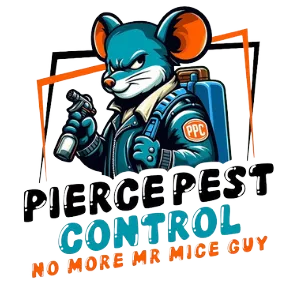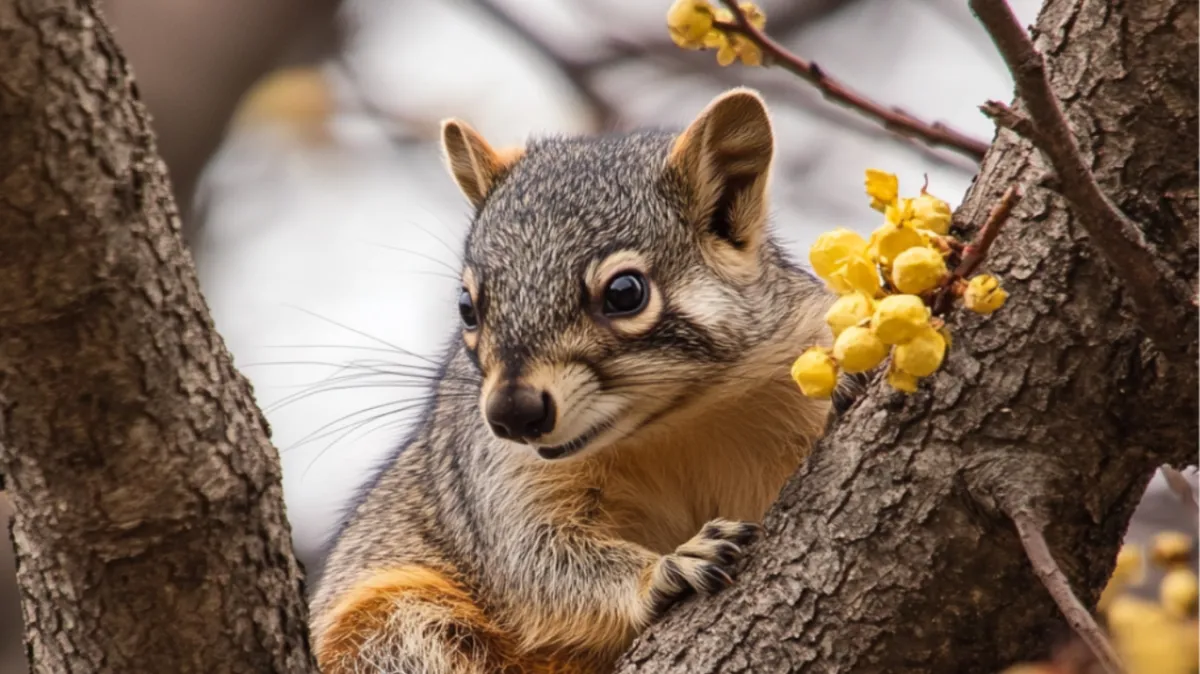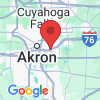
The Akron Pest Journal
Pierce Pest Control Akron Journal

Urban Wildlife Management: Coexisting with Spring Visitors
Why Spring Brings More Wildlife Encounters
Spring is a season of renewal and activity—not just for people, but for urban wildlife as well. As temperatures rise and food becomes more abundant, many animals enter their breeding season, leading to increased movement and territorial expansion. Unfortunately, this also means more encounters with homeowners as wildlife seeks safe, warm spaces to nest and raise their young.
Key Reasons for Increased Wildlife Activity in Spring
1: Breeding Season Begins
Many wildlife species, including squirrels, raccoons, and skunks, mate in late winter to early spring and give birth in March through May.
Mothers look for warm, secure areas to raise their young, often inside homes, sheds, or attics.
Animals are more territorial during this period, which can lead to aggressive behavior if they feel their nest is threatened.
2: Increased Food Availability
Warmer temperatures bring more insects, fruits, and vegetation, providing easier access to food for wildlife.
Raccoons and rodents scavenge more frequently, often raiding trash cans, compost bins, and pet food bowls.
Gardens and bird feeders can attract wildlife, leading them closer to homes.
3: Post-Winter Nesting Urge
Animals that hibernate or remain less active during winter (such as skunks and rodents) wake up hungry and begin searching for shelter.
Wildlife prefers dark, undisturbed spaces for nesting, leading them to invade crawl spaces, attics, chimneys, and sheds.
4: More Daylight = More Activity
Longer daylight hours give animals more time to search for food and nesting spots.
Nocturnal creatures like raccoons and skunks become more active at dusk and dawn, leading to more frequent sightings in residential areas.
Common Urban Wildlife Problems in Akron During Spring
Here’s what Akron homeowners often encounter during spring wildlife season:
1. Squirrels Nesting in Attics & Chewing Wires
Squirrels are notorious for nesting in attics, especially if they find small gaps in roofs or vents.
They chew on electrical wires, creating fire hazards and potential power outages.
Baby squirrels (kits) are often born in March-April, meaning mothers will aggressively defend their nesting area.
2. Raccoons Rummaging Through Trash & Spreading Diseases
Raccoons are highly intelligent scavengers that target garbage cans, pet food bowls, and compost bins for an easy meal.
They carry diseases such as rabies and roundworm, posing a health risk to pets and humans.
Their dexterous paws allow them to open trash can lids and even unlock weakly secured doors or bins.
3. Skunks Burrowing Under Decks & Spraying When Threatened
Skunks love to dig burrows under decks, porches, and sheds for safe denning sites.
Their defensive spray can linger for weeks and is difficult to remove from surfaces, clothing, and pets.
Spring is mating season, making male skunks more aggressive and territorial if they sense another animal nearby.
4. Birds Nesting in Vents & Chimneys
Birds seek warm, sheltered locations like dryer vents, exhaust vents, and chimneys to build their nests.
Nesting materials can block ventilation, leading to fire hazards and poor indoor air quality.
Certain bird species (such as starlings and sparrows) are persistent nesters, often returning to the same location year after year.
Wildlife Prevention Strategies for Your Home
1. Secure Your Trash and Food Sources
Wildlife is often drawn to easily accessible food, making your trash an attractive target. To reduce unwanted visits, follow these best practices:
Use wildlife-resistant trash bins with tight-fitting lids.
Take out garbage regularly and store it indoors or in a locked container until pickup day.
Avoid leaving pet food outside overnight, as it can attract raccoons and skunks.
Clean up fallen bird seed or fruit from trees, which can encourage wildlife to linger in your yard.
By removing food incentives, you make your property less appealing to urban wildlife.
2. Seal Entry Points to Your Home
Many animals, especially squirrels and raccoons, seek out warm, enclosed spaces for nesting. They often enter through small gaps in attics, crawlspaces, and basements. To wildlife-proof your home, inspect and seal these common entry points:
Roof gaps and attic vents: Use heavy-duty wire mesh to cover openings.
Chimneys and vents: Install caps or screens to prevent birds and raccoons from entering.
Foundation cracks: Seal small openings with caulk or expandable foam to prevent burrowing animals.
Gaps under decks and sheds: Block access using fencing or buried wire mesh to keep skunks and groundhogs out.
Regular inspections help identify potential vulnerabilities before wildlife moves in.
3. Maintain Your Yard to Deter Wildlife
A cluttered yard provides excellent shelter for wildlife, making it more likely that animals will settle nearby. To make your yard less inviting, follow these simple maintenance tips:
Trim tree branches at least 6–8 feet away from your home to prevent squirrels from jumping onto your roof.
Keep bushes and grass trimmed to reduce hiding spots for skunks and rodents.
Remove woodpiles, debris, and standing water that could attract nesting wildlife.
Secure compost bins to prevent raccoons from digging for food.
A well-maintained yard acts as a natural deterrent against unwanted animal guests.
4. Humane Wildlife Deterrents
If you already have wildlife frequenting your yard, consider using humane deterrents to encourage them to move on:
Motion-activated lights or sprinklers startle raccoons and skunks.
Ultrasonic deterrents emit sounds that are unpleasant to certain animals but inaudible to humans.
Natural repellents like citrus peels or ammonia-soaked rags discourage wildlife from nesting near your home.
Decoys such as predator statues (like plastic owls) can sometimes deter smaller animals from settling in your yard.
These solutions discourage wildlife without harming them, promoting safe coexistence.
What to Do If Wildlife Has Already Moved In?
1: Identify the Wildlife & Observe from a Distance
Determine what type of animal you’re dealing with (squirrel, raccoon, skunk, etc.).
Note their behavior patterns—are they nesting, scavenging for food, or using your home as a shelter?
Look for entry and exit points—these are often small holes in attics, crawlspaces, under porches, or inside wall voids.
Do NOT approach the animal—especially if it seems sick, overly aggressive, or unusually docile, as these may be signs of disease or injury.
2: Avoid Blocking the Entry Point Too Soon
It’s tempting to seal off holes or block the entrance immediately, but this can trap animals inside, leading to:
Increased property damage (as they chew or claw through walls to escape).
Increased aggression (especially if they have babies inside).
Potential deaths inside your home, which can cause strong odors and attract scavengers.If you suspect an animal has babies in a nest, do not remove or disturb the site—many wildlife species will return for their young.
3: Contact a Professional Wildlife Control Service
Do not attempt to trap or relocate the animal yourself—many wildlife species are protected by local regulations, and improper handling can lead to legal consequences.
Call a licensed wildlife removal expert, like Pierce Pest Control, to ensure the safe, humane removal and relocation of the animal.
Our specialists will:
Assess the situation and determine the safest removal strategy.Use humane exclusion techniques to encourage the animal to leave naturally.
Remove the animal legally and ethically, following Ohio wildlife laws.
Seal off entry points to prevent future invasions.
4: Prevent Future Wildlife Intrusions
Once the animal is safely removed, take preventative steps to ensure wildlife doesn’t return:
Seal entry points with heavy-duty materials (such as steel mesh, chimney caps, and reinforced vent covers).
Install motion-activated deterrents (such as lights, sprinklers, or ultrasonic repellents).
Keep food sources secured (including pet food, compost bins, and fruit trees).
Schedule regular home inspections with Pierce Pest Control to monitor potential risks.
If you suspect squirrels, raccoons, skunks, or other urban wildlife have moved in, don’t wait until the problem escalates. Pierce Pest Control is here to help! Our team provides humane, effective, and long-term solutions to keep your home pest-free.
Visit us online at https://piercepestcontroloh.com/ to schedule your wildlife inspection and prevention service!

Schedule a Pest Inspection
Ready to schedule a pest inspection? Contact us today.

